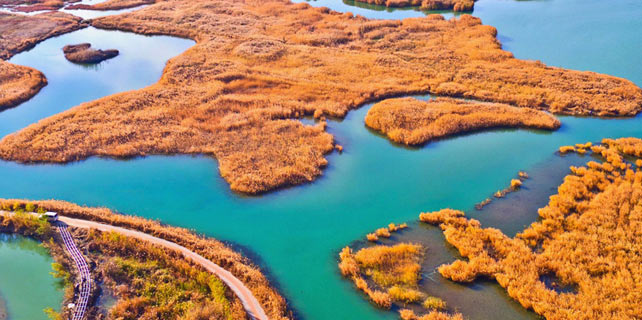China, US researchers team up on climate lab
Scientists say facility will provide better data about Earth's changes
Top research institutions in China and the United States announced on Thursday that they will build an international laboratory to more accurately measure and predict global climate change.
The International Laboratory for High-Resolution Earth System Prediction will concentrate on simulations to provide reliable data at both regional and global levels, and is expected to enhance extreme weather forecasting and disaster prediction for the benefit of stakeholders and policymakers, experts said.
The lab will be jointly operated by Qingdao National Laboratory for Marine Science and Technology, the US-based National Center for Atmospheric Research and Texas A&M University. The three parties, who signed an agreement in Qingdao, Shandong province, have been global leaders in climate change research.
The lab will have two offices-in Qingdao and Texas.
"Each side brings its advantages to this cooperation," said Michael Benedik, vice-provost of the university, located in Corpus Christi. "It's exciting. This is an example of the two countries really partnering with their expertise."
In the cooperation, the US atmospheric research center, with many years of experience, will provide state-of-the-art oceanic and climate modeling; the Texas university has expertise in regional ocean modeling; and the Qingdao marine technology lab owns the fastest supercomputer in the world for marine research.
"This new laboratory is going to be critical for improving the ocean component of our modeling systems," said James Hurrell, director of the US center.
He added that it's important because when thinking about climate variability and longer-term climate change-from seasons to decades and even longer time scales-much of the memory of Earth's systems and climate resides in the ocean.
One of the major goals for the China-US lab project is to simulate global climate change between the years 1400 and 2400-500 years before and after 1900-by using high-performance computers.
Before 1900, humans intervened less in nature. After that, as the modern industrial revolution took place, people had an increasing impact on nature and climate.
"Only when we learn how climate evolved in the past can we improve precision in the future," said Ping Chang, a professor of atmospheric science at Texas A&M.
Wu Lixin, director of the Qingdao marine technology lab's executive committee, said China has become a leading global force in combating climate change, and it's significant for a Chinese research institution to establish a branch such as the new lab in a country with powerful research abilities.
"As the first national laboratory for marine research in China, our lab is making efforts to undertake major strategic tasks, build a global network with innovative force for marine research and transform the marine governance system worldwide," said Wu, an academician at the Chinese Academy of Sciences.
The Qingdao lab is planning to partner with the renowned Woods Hole Oceanographic Institution to build a center on deep-sea research and join hands with a Russian research center on Arctic studies, Wu added.
















